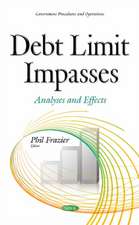A View of the Art of Colonization: With Present Reference to the British Empire: in Letters between a Statesman and a Colonist: Cambridge Library Collection - British and Irish History, 19th Century
Editat de Edward Gibbon Wakefielden Limba Engleză Paperback – 24 noi 2010
Din seria Cambridge Library Collection - British and Irish History, 19th Century
-
 Preț: 355.86 lei
Preț: 355.86 lei - 23%
 Preț: 2443.23 lei
Preț: 2443.23 lei -
 Preț: 275.77 lei
Preț: 275.77 lei -
 Preț: 313.87 lei
Preț: 313.87 lei - 19%
 Preț: 725.60 lei
Preț: 725.60 lei -
 Preț: 202.90 lei
Preț: 202.90 lei - 23%
 Preț: 1081.79 lei
Preț: 1081.79 lei - 23%
 Preț: 1279.99 lei
Preț: 1279.99 lei -
 Preț: 276.01 lei
Preț: 276.01 lei -
 Preț: 275.77 lei
Preț: 275.77 lei -
 Preț: 248.84 lei
Preț: 248.84 lei -
 Preț: 331.14 lei
Preț: 331.14 lei -
 Preț: 407.56 lei
Preț: 407.56 lei -
 Preț: 519.83 lei
Preț: 519.83 lei -
 Preț: 330.16 lei
Preț: 330.16 lei -
 Preț: 421.20 lei
Preț: 421.20 lei -
 Preț: 370.01 lei
Preț: 370.01 lei -
 Preț: 278.22 lei
Preț: 278.22 lei - 19%
 Preț: 477.33 lei
Preț: 477.33 lei -
 Preț: 422.16 lei
Preț: 422.16 lei -
 Preț: 278.99 lei
Preț: 278.99 lei -
 Preț: 248.28 lei
Preț: 248.28 lei -
 Preț: 277.07 lei
Preț: 277.07 lei -
 Preț: 287.73 lei
Preț: 287.73 lei -
 Preț: 442.83 lei
Preț: 442.83 lei -
 Preț: 338.14 lei
Preț: 338.14 lei - 19%
 Preț: 596.21 lei
Preț: 596.21 lei -
 Preț: 375.10 lei
Preț: 375.10 lei -
 Preț: 353.31 lei
Preț: 353.31 lei -
 Preț: 366.74 lei
Preț: 366.74 lei -
 Preț: 368.10 lei
Preț: 368.10 lei -
 Preț: 252.15 lei
Preț: 252.15 lei -
 Preț: 519.66 lei
Preț: 519.66 lei -
 Preț: 330.93 lei
Preț: 330.93 lei -
 Preț: 280.17 lei
Preț: 280.17 lei -
 Preț: 222.36 lei
Preț: 222.36 lei -
 Preț: 368.69 lei
Preț: 368.69 lei -
 Preț: 278.61 lei
Preț: 278.61 lei -
 Preț: 371.20 lei
Preț: 371.20 lei -
 Preț: 522.33 lei
Preț: 522.33 lei -
 Preț: 369.62 lei
Preț: 369.62 lei - 19%
 Preț: 533.47 lei
Preț: 533.47 lei -
 Preț: 465.38 lei
Preț: 465.38 lei -
 Preț: 467.33 lei
Preț: 467.33 lei -
 Preț: 240.12 lei
Preț: 240.12 lei -
 Preț: 368.10 lei
Preț: 368.10 lei
Preț: 517.71 lei
Nou
Puncte Express: 777
Preț estimativ în valută:
99.07€ • 105.93$ • 82.60£
99.07€ • 105.93$ • 82.60£
Carte tipărită la comandă
Livrare economică 17 aprilie-01 mai
Preluare comenzi: 021 569.72.76
Specificații
ISBN-13: 9781108023481
ISBN-10: 1108023487
Pagini: 542
Dimensiuni: 140 x 216 x 30 mm
Greutate: 0.68 kg
Editura: Cambridge University Press
Colecția Cambridge University Press
Seria Cambridge Library Collection - British and Irish History, 19th Century
Locul publicării:Cambridge, United Kingdom
ISBN-10: 1108023487
Pagini: 542
Dimensiuni: 140 x 216 x 30 mm
Greutate: 0.68 kg
Editura: Cambridge University Press
Colecția Cambridge University Press
Seria Cambridge Library Collection - British and Irish History, 19th Century
Locul publicării:Cambridge, United Kingdom
Cuprins
; .
Descriere
A detailed discussion and explanation of Edward Gibbon Wakefield's (1796–1862) influential philosophy of colonization, first published in 1849.


















